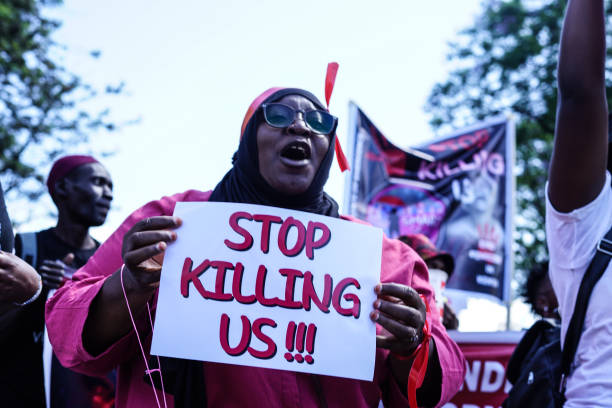Femicide is defined as an intentional killing motivated by gender-related factors. This distinction sets it apart from homicide, where motivations may not necessarily relate to gender. Femicide is driven by the discrimination against women and girls, unequal power relations, harmful gender stereotypes, and social norms. It is the most extreme manifestation of violence against women and girls, which exists on a continuum that includes various forms of violence, such as intimate partner violence, sexual harassment, and other sexual violence, as well as harmful practices and trafficking.
- Women and Girls Are Most Likely to Be Killed by Those Closest to Them
In 2023, approximately 51,100 women and girls worldwide were killed by intimate partners or family members, including fathers, mothers, uncles, and brothers. This statistic translates to an average of 140 women or girls killed every day by someone within their own family. Current and former intimate partners are responsible for around 60 percent of all intimate partner and family-related killings.
It is important to note that only gender-related killings committed by an intimate partner or family member are typically counted as femicides, although such killings can occur in various contexts outside the private sphere. They may stem from rape or sexual violence committed by an unknown person, be linked to harmful practices such as female genital mutilation or so-called honor killings, arise from hate crimes related to sexual orientation or gender identity, or be associated with armed conflict, gangs, human trafficking, and other forms of organized crime. This year recorded the highest number of femicides perpetrated by intimate partners or family members, emphasizing the urgent need for early intervention, gender-responsive policing and justice, and survivor-centered support and protection.
- Femicide Is a Universal Problem
Femicide is a global crisis affecting women and girls in every country and territory. The 2023 report indicates that Africa recorded the largest absolute and relative numbers of female intimate partner and family-related killings, with an estimated 21,700 victims (2.9 victims per 100,000). The Americas and Oceania also reported high rates of intimate partner/family-related femicide in 2023, at 1.6 and 1.5 per 100,000 respectively, while Asia and Europe had significantly lower rates (0.8 and 0.6 per 100,000, respectively). - The True Scale of Femicide Is Likely Much Higher
Although the reported numbers are alarmingly high, they represent only the tip of the iceberg. Many femicide victims go uncounted; for approximately four in ten intentional murders of women and girls, there is insufficient information to classify them as gender-related killings due to differences in criminal justice recording and investigation practices across countries. To accurately understand and respond to the true scale of this issue, comprehensive disaggregated data is essential. To improve data collection, UNODC and UN Women developed a statistical framework for measuring the gender-related killing of women and girls (femicide/feminicide), which was approved by the United Nations Statistical Commission in March 2022. Behind each statistic, there is a woman or girl whose life has been tragically ended due to male violence, misogyny, and social norms that perpetuate violence against women and girls. - Certain Groups of Women and Girls Face Greater Risks
Women in the public eye, such as politicians, human rights defenders, and journalists, frequently become targets of deliberate violence, both online and offline, with some cases resulting in fatal outcomes. Women environmental defenders have been prominent in at least a quarter of all socio-environmental conflicts worldwide, and they have been killed in 81 of those conflicts. In 2023, the Office of the High Commissioner for Human Rights (OHCHR) reported that women human rights defenders were targeted for both their work and their gender, both online and offline, documenting at least 34 women human rights defenders who were killed.
